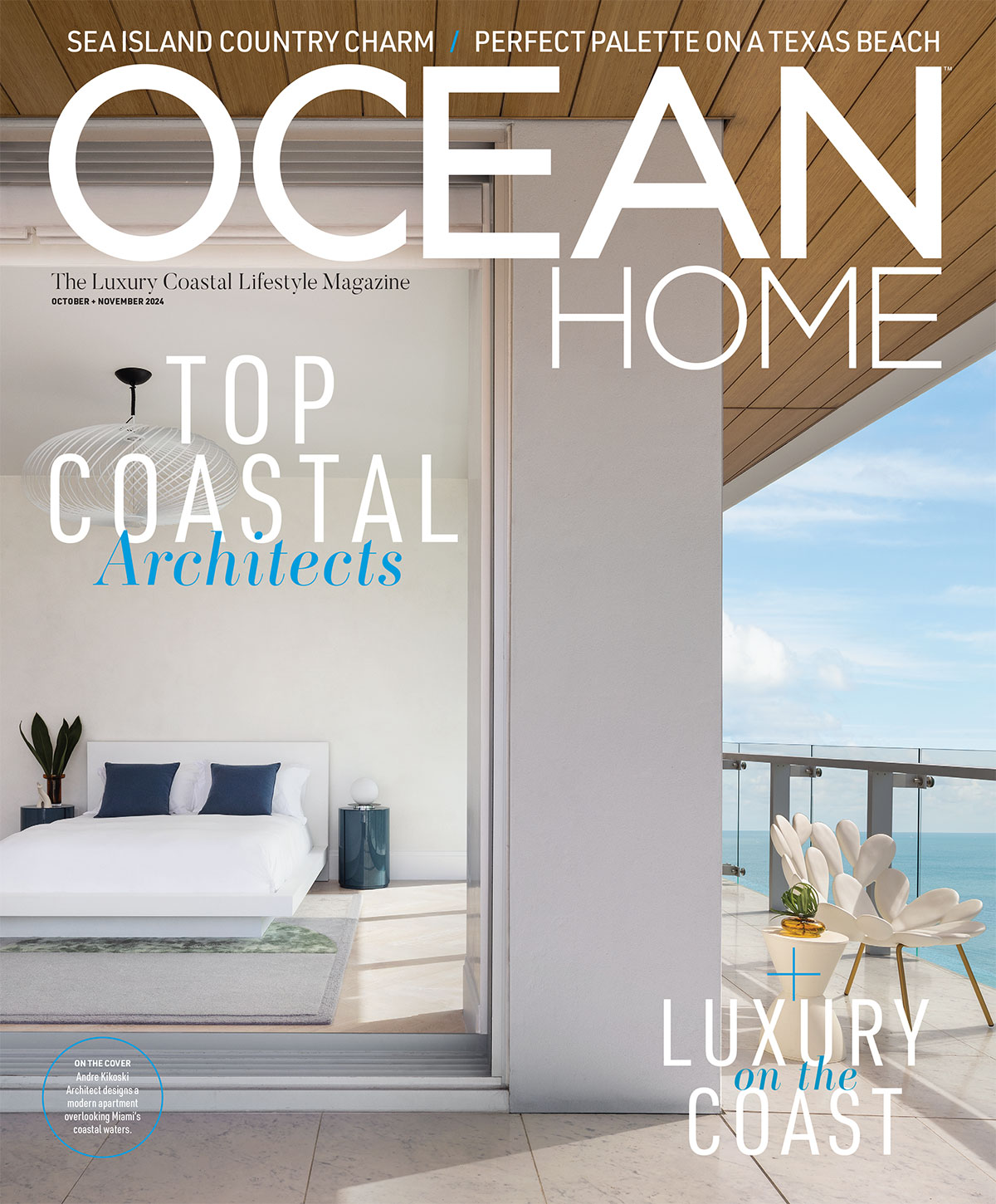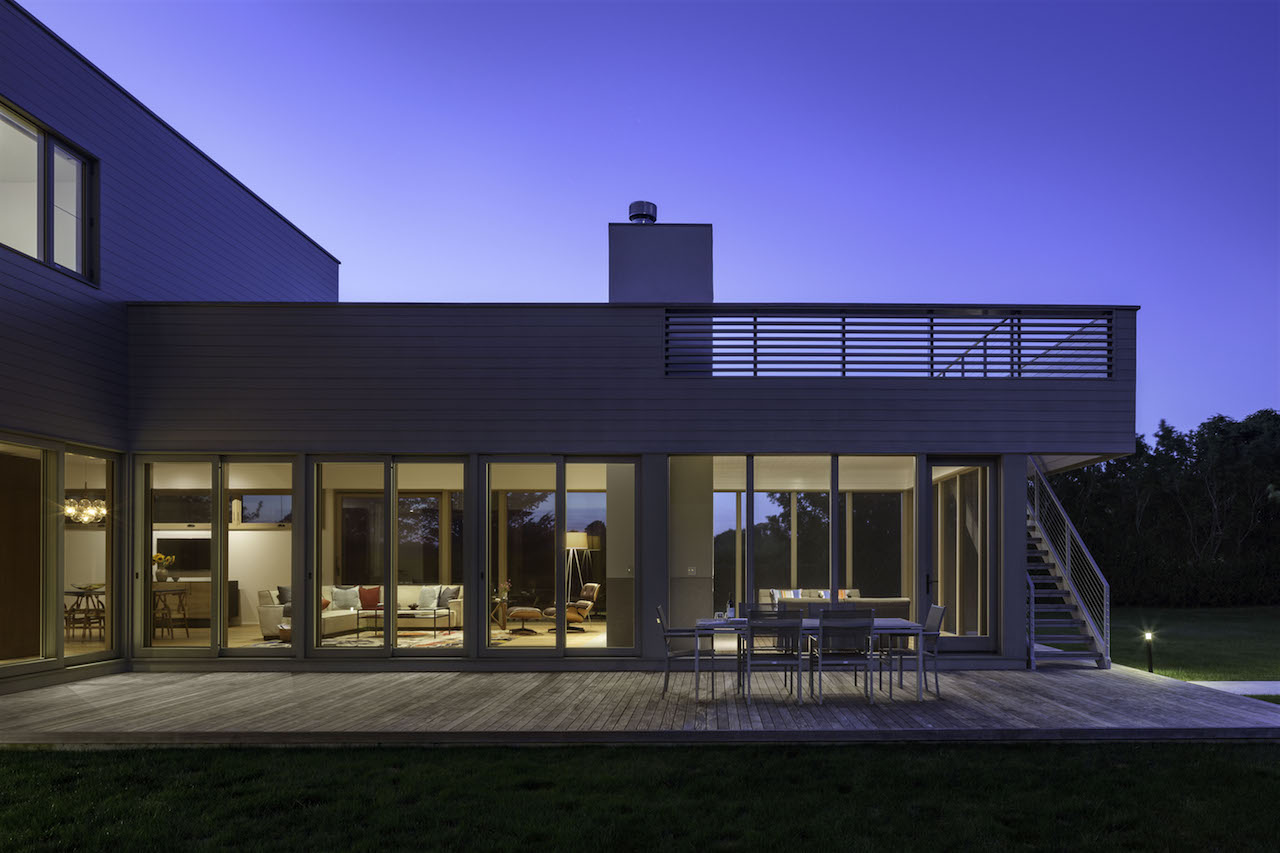Back in the late 1960s, ’70s, and ’80s, if you wanted a snappy, geometric gem of a house in the Hamptons, there was one architect to call.
His name was Charles Gwathmey, and he was one of the cutting-edge modernists known as the New York Five. He’d no sooner graduated from the Yale School of Architecture in 1962 than he designed a house for his parents in Amagansett—one that brought him international attention and raised the bar for residential design everywhere. His New York firm, Gwathmey Siegel & Associates Architects, was legendary for its crisp interpretation of modern design.
Today, if you’re looking for a compelling home in the Hamptons, there’s a new go-to gang of designers to consider. They’re also based in New York, and they too have strong connections to Yale. In fact, Deborah Berke, the leader of this 60-person firm was anointed dean of the Yale School of Architecture last year and is the first woman to occupy the position.
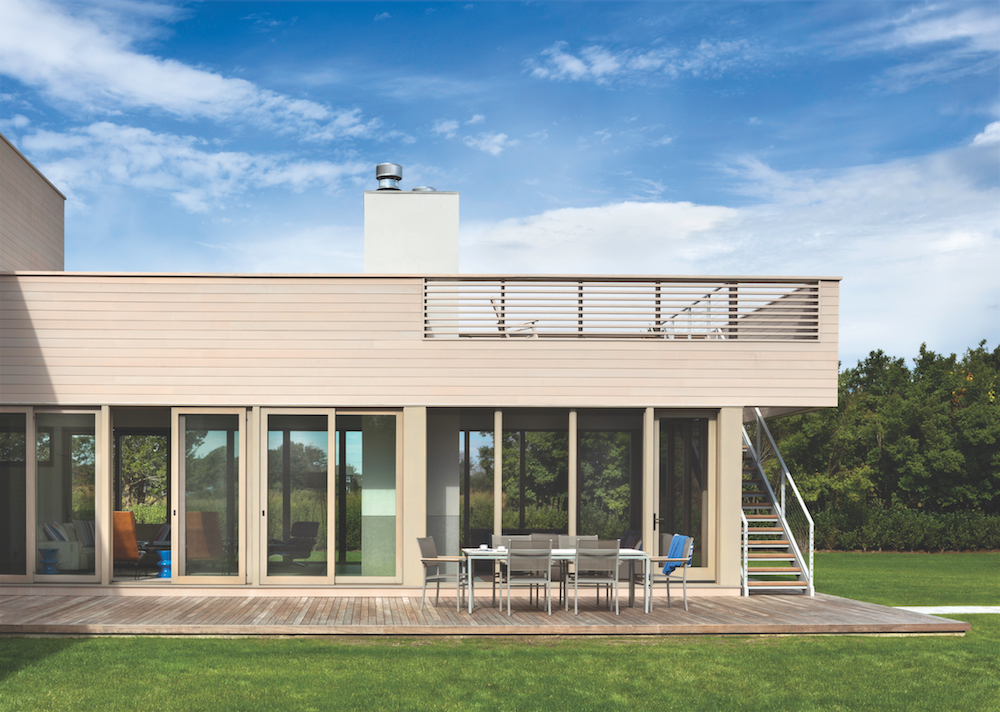

In a new home on the East End of Long Island, Berke the partner in the firm that bears her name, has harkened back to Gwathmey’s spare language of pure form. With fellow principal Noah Biklen (also a Yale graduate), Berke has created a sparkling gem of a house, one that redefines what it means to live in style near the beach. They paired up with landscape architect Joe Tyree for a stripped-down, minimalist statement about just how much can be achieved on what was once a small, flat piece of farmland.
“What I see here is that the red front door and clear geometry are making a forward nod to the Gwathmey era of Eastern Long Island,” Berke says. “This house acknowledges it but moves it forward to the 21st century.”
The clients, a New York couple—an attorney and a filmmaker—wanted a house where they can relax but also engage in athletic activities. “They live high-pressure, busy lives,” she says. “They’re very outdoorsy and sports focused.”
Site and House
The architects tore down a 1960s-era house that failed to take advantage of the site, which is just a half mile from the ocean. The new home fully engages with a nature preserve to the north via near floor-to-ceiling glazing throughout its ground level, and includes a pair of roof decks to capture sweeping views of the Atlantic to the southeast.
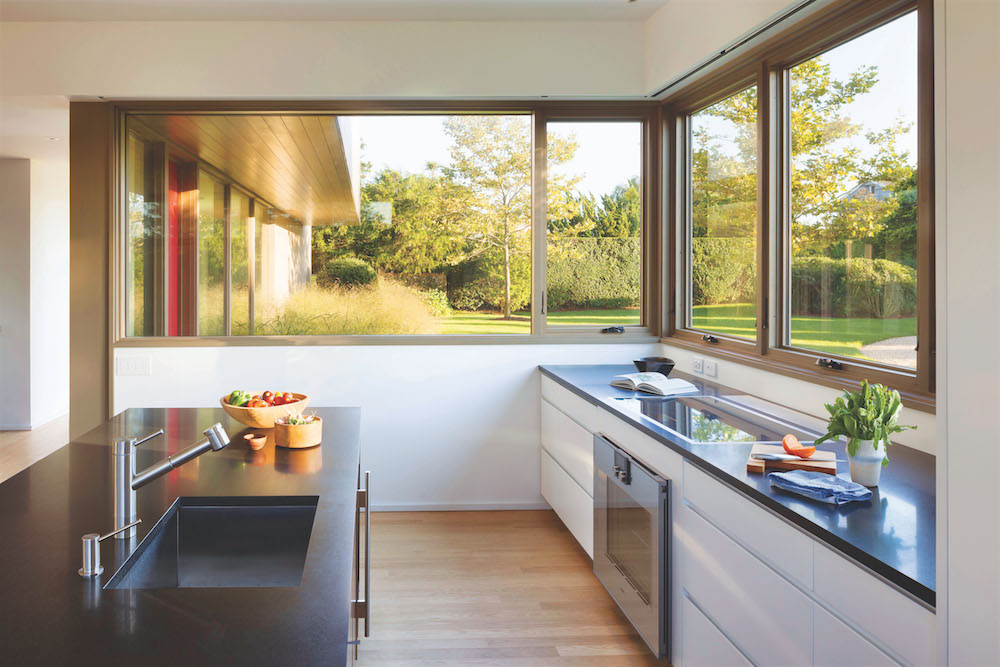

Grade-level terraces are placed strategically throughout the home and landscape: off the main living room, near the master suite, and at the swimming pool. “We wanted an experience from the site, so that when you arrive and go through the house, you’re focused on discovery,” says Biklen. “You can use one terrace in the morning and another in the afternoon.
“There are all these places you can be and enjoy during the day so you follow them informally, one room to the next,” he continues.
The site is shaped like a flagpole, with the driveway as the pole, ending in a slight curve at the entry court. Visitors walk on axis into the entry and can move through a glass door straight out to the pool and terrace, turn right to head up to three bedrooms and a gym, or downstairs to a family room and second gym. If they turn left, they’ll find a big, open continuum of kitchen, living room, dining room, and screened porch with a fireplace on each side, outdoors and in. “There’s solidity and transparency—we’re trying to allow people to really appreciate the view and what’s beyond,” Biklen says.
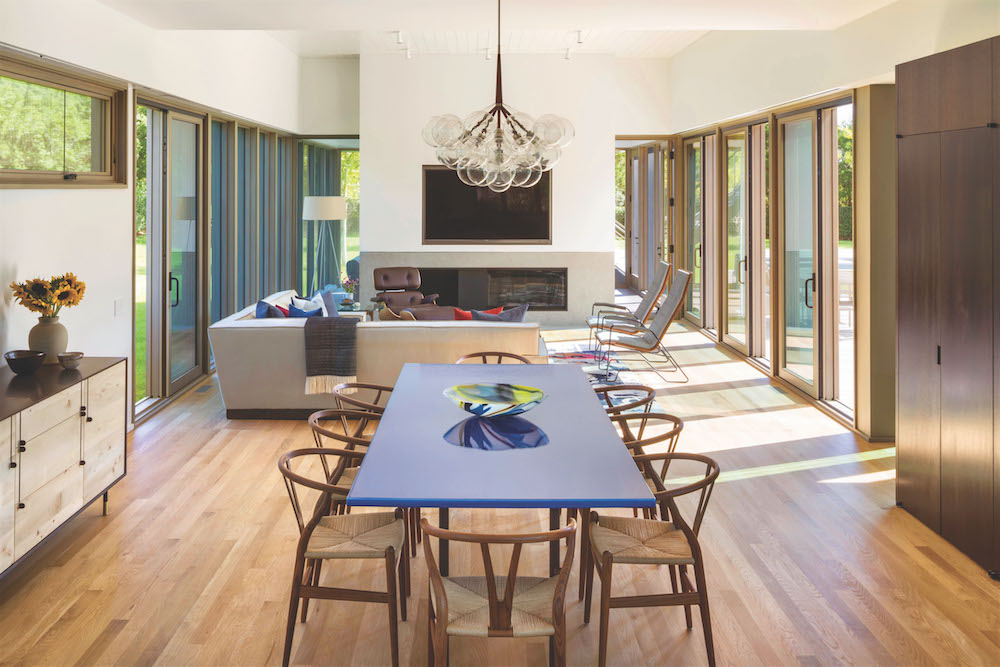

The architects’ intent was to turn the 3,600-square-foot house into an unfolding procession of stacked and shifting volumes bathed in light and shadow. “Even if you’ve been in the house a long time, or are new to it, you discover something new about how the light is falling on it,” he says. “We started with the idea of rectangles that shift for overhanging at entries and the shadows in spaces that make a place.”
Their material palette is an essay in restraint. The home is clad in Alaskan yellow cedar, stained with a weathering seal so the wood initially ages to a warm, light gray and later to a silvery cedar tone. “There’s a tautness to it with the shadows,” Biklen points out. “The boards are all aligned for a layer of precision to the overall design.”
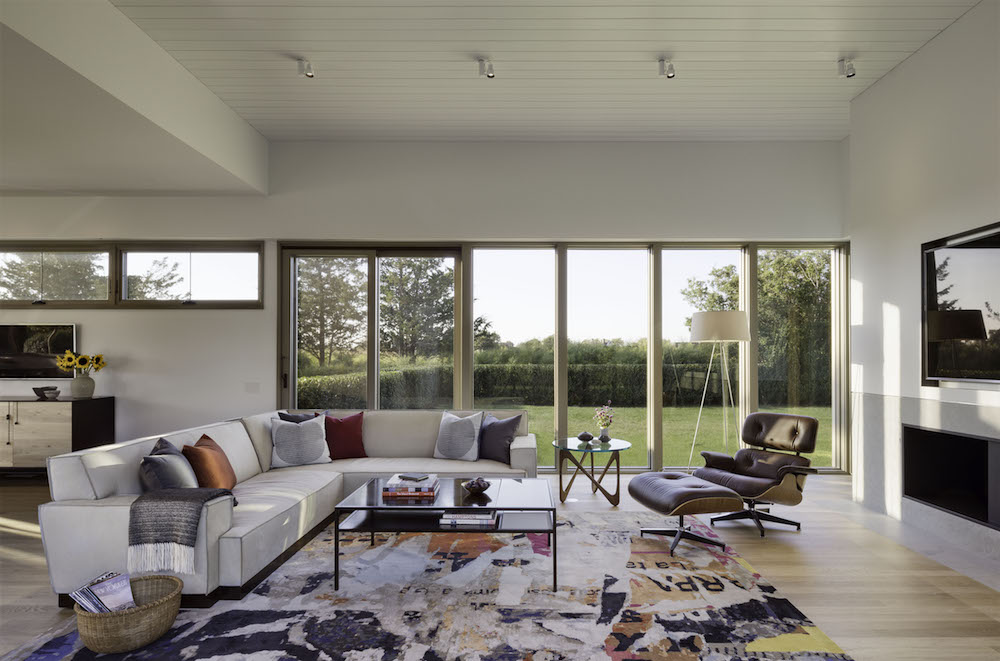

The foundation is concrete, left exposed in the basement gym, with a wash on the walls to highlight its texture. Outdoor walkways are precast concrete pavers and the interior millwork is African wenge finished with a dark stain. “The materials speak to the history of the architecture of the region,” Berke says. “That’s my minimalist sense—a fairly uniform, non-aggressive palette.”
Topography and landscape
With the exception of a few existing trees and the landscape design by Tyree, the flat topography of the site is partitioned by the house itself. “It’s a separator between arrival at the front door and the pool at the back,” Berke says. “It’s a house that divides the place from where you leave on a bike and where you sit by the pool.”
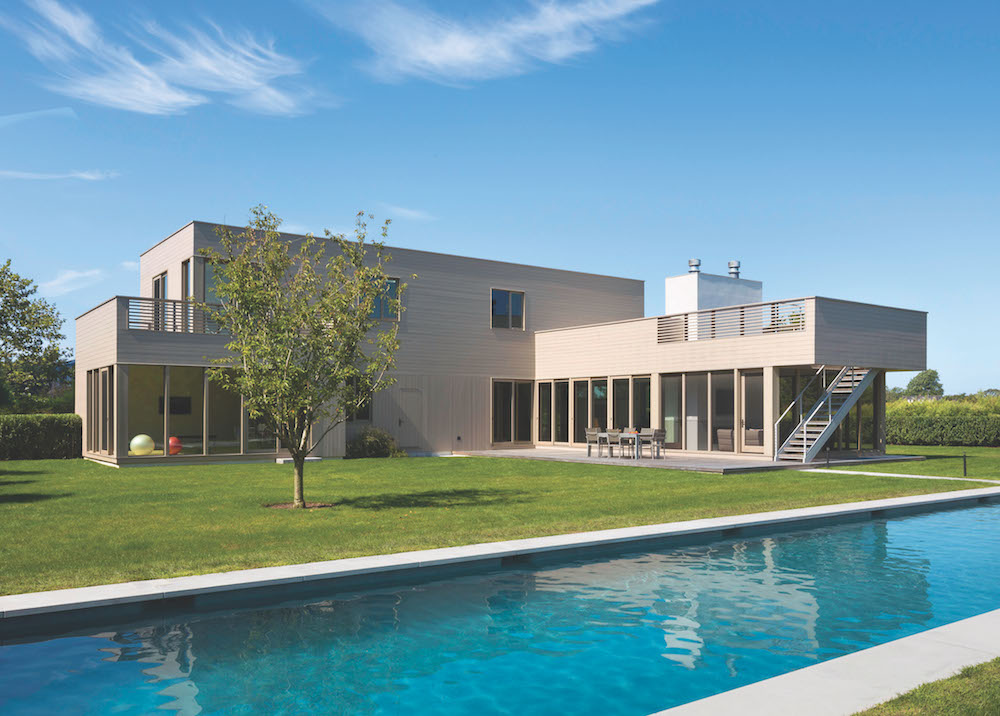

Tyree’s landscape is as equally restrained as the architecture. Only a handful of trees—sycamores, Japanese cedars, and pink and white crepe myrtles—were planted along with shrubs, hedges, and ornamental grasses. “It was kind of simple because the clients were quite easy and didn’t know a lot about planting,” Tyree says. “They are not big gardeners, so there’s no vegetable or flower garden.”
His design approach was highly thoughtful, however. Tyree created privacy and shade where they were needed and opened the house and terraces up to the views, especially the neighboring nature preserve to the north. “The house is modern and rectangular, and my job was to be careful about the plantings and not overdo it,” he says. “I wanted to highlight the house and the architecture and keep it really clean.”
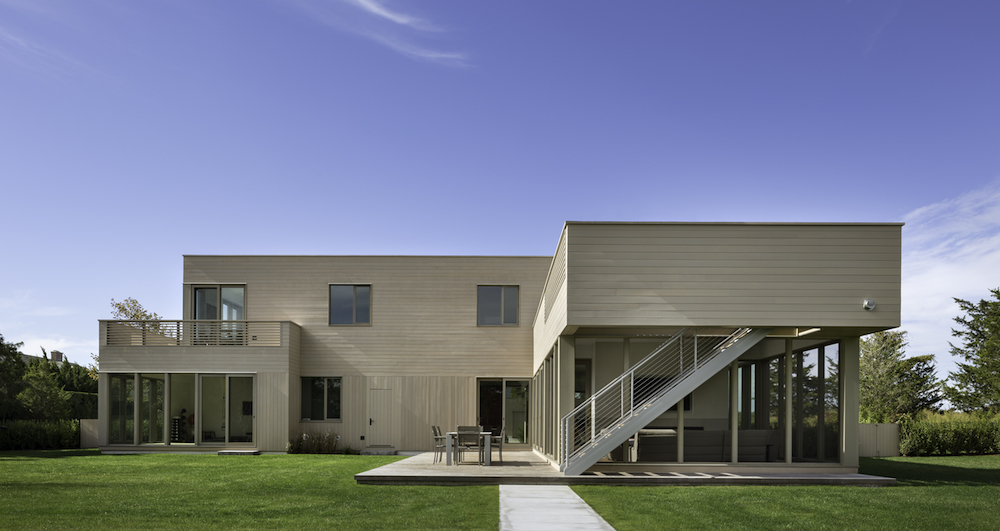

With four neighboring properties, Tyree set about blurring the site’s edges, hiding fences with hedges and continuing plantings from the other side of the property line to his clients’ side as though they’d hopped over the fence. “We picked plant materials that were used already on the neighbors’ properties to knit together and extend the landscape,” he says. “One of the reasons we used the cedars and evergreens is to emulate a grove that travels from property to property.”
It’s a regrettable fact that only two members of the New York Five, Peter Eisenman and Richard Meier, are still living, teaching, and practicing architecture today. But it’s also a fact that their pure, modernist aesthetic is alive and well at Deborah Berke Partners. And this house—a new take on a minimalist approach to design—is walking, talking proof of that.
For more information, visit dberke.com
Click here to see more of our Top 50 Coastal Architects 2017
Image Credits: Photos by Chris Cooper.
